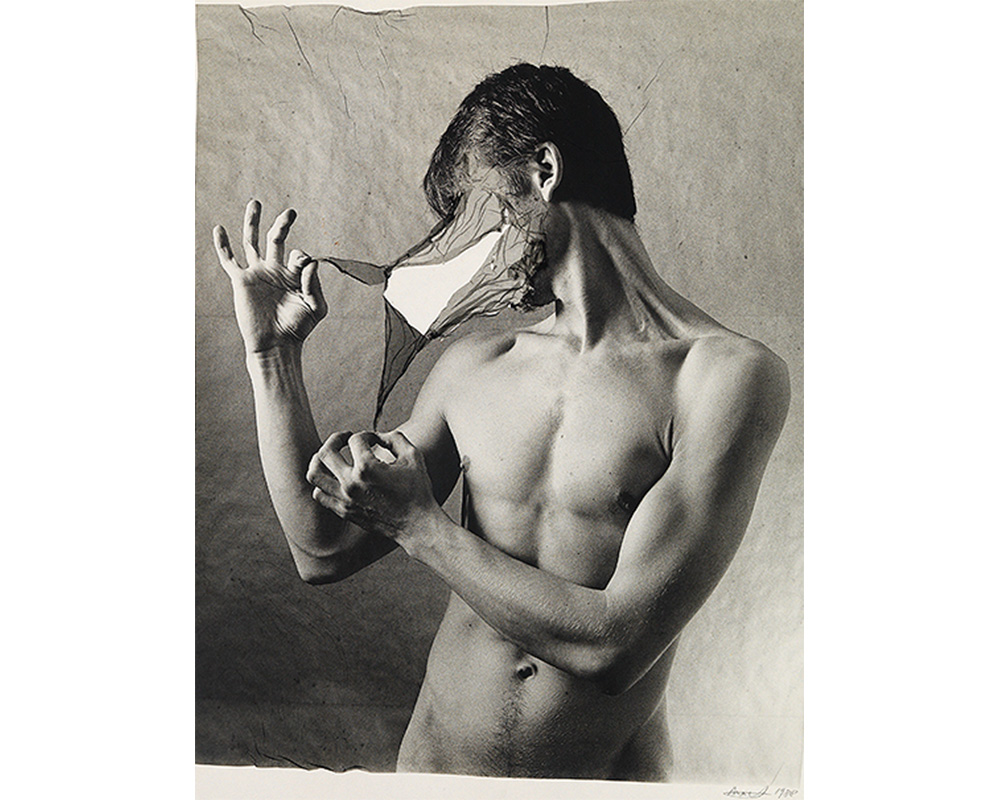
A History of Handwork | Untitled #14
Guest blogger Ana C. Ledgerwood '17 wrote this post as part of her coursework for ARH 280: Photography and the Politics of Invisibility taught by Post-Doctoral Fellow Anna Lee. This course informed the current exhibition A History of Handwork: Photographs from the SCMA Collection on view on the Museum’s second floor until December 3, 2017.
Czech photographer Michal Mackü created Untitled #14 using an unusual technique called gellage —a fusion of the words gelatin and collage— which he invented and perfected during the late 1980s and ‘90s. To make a gellage image, Mackü begins by developing a photograph using a glass plate covered with a thin layer of gelatin, a typical method of late nineteenth-century photography. Once the glass plate is chemically treated to develop and fix the image, Mackü, rather than making prints from this developed plate, instead dips the plate into a second chemical solution to separate the gelatin layer from its glass backing. Mackü then transfers this delicate film of gelatin onto a sheet of white paper. While both the gelatin film and the paper are wet, Mackü can slide, scrunch, fold, and tear the gelatin with his hands to create the various types of textures seen in Untitled #14. The artist sometimes spends several hours manipulating the gelatin film to achieve his desired result. The piece is then allowed to dry so that the gelatin will permanently stick to the paper.
Mackü’s art focuses on three-dimensional structure. He has compared his work with photography to sculpture, a medium he appreciates for the way in which it allows the artist to create in a direct, hands-on manner. His early gellages, such as Untitled #14 are rich with complex textures. In a later series of gellages, titled The Multiples, Mackü pushed the physical limits of the technique further by layering multiple gelatin films on top of one another, producing images with even more pronounced structure. Both the early and later gellages speak to Mackü’s love of experimentation. They also call attention to the physical characteristics of photographic materials, characteristics that are not apparent in traditional photography.
Mackü almost exclusively uses his own body as a model for his gellages, preferring to work with a subject that he already knows well: “It enables me to do focused work, in effect discovering the self, the physical manifestation of one’s being”.* Here, the subject appears to be peeling off his face, leaving himself without an identity. There is a tension in this gellage between individuality and anonymity: the artist has a deeply personal, intimate connection to the subject of the image (and to the process of its creation), while the viewer sees the subject as an anonymous figure.
* Michal Mackü, interview with Jindrich Streit and Ladislav Danek, 1996.